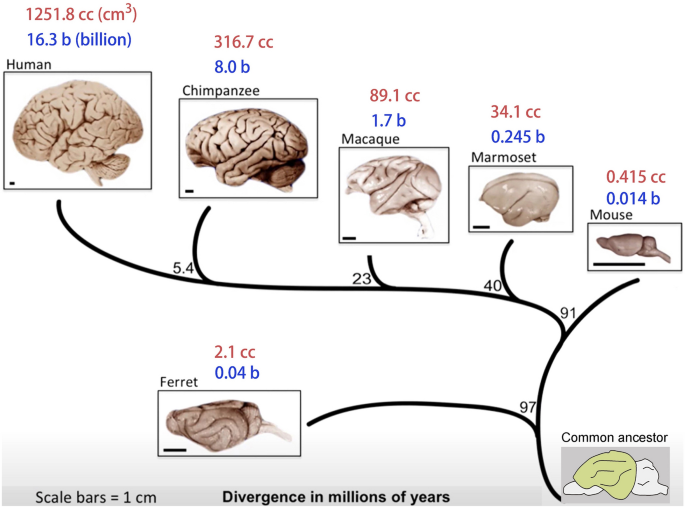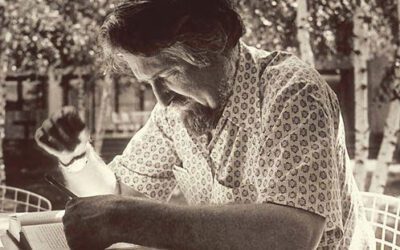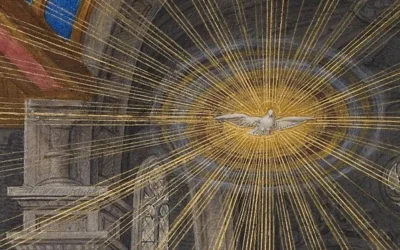Where Does Conciousness Come From?

Where did conciousness come from?The nature of human consciousness has long been one of the great mysteries of science and philosophy. What is this subjective inner experience that seems to define our existence? Where does our sense of self come from? And what happens when the psyche is shattered by trauma?
In recent decades, groundbreaking work by neuroscientists like Michael Gazzaniga and Antonio Damasio has shed new light on these profound questions. While approaching the problem from different angles, they have converged on a paradigm-shifting insight: the self is not a unitary, immaterial entity, but an emergent property of the brain’s physical processes, shaped by our embodied emotions and the mind’s narrative capacities.
In this article, we’ll explore how Gazzaniga and Damasio’s theories intersect with ideas from depth psychology to create a richer understanding of consciousness and its vulnerabilities. As we navigate this fascinating terrain, we’ll ask:
What leads Gazzaniga to propose that the self is a “story told by the brain,” and what are the implications for free will?
How does Damasio’s concept of the “feeling brain” reframe the role of emotions in human reasoning and decision making?
What insights does Jungian psychology offer about the deeper layers of the psyche, and how might they relate to neuroscientific models?
And most importantly, how can this integrated understanding help us develop more effective treatments for psychological trauma?
By weaving together these diverse strands, we’ll attempt to create a tapestry of the self that does justice to its amazing intricacy. So let’s begin our journey into the heart of the mystery – the question of who and what we really are.
Gazzaniga and the Interpreter Within
As one of the pioneers of split-brain research, Michael Gazzaniga has spent his career studying how the brain’s two hemispheres communicate and coordinate their respective functions. His work has led him to a startling conclusion: there is no single, unified self that directs our thoughts and actions. Rather, the self is a narrative “afterthought” – a story the brain tells itself to make sense of the outputs of its own parallel processes.
Gazzaniga arrived at this insight through his famous split-brain studies, in which he tested patients whose corpus callosum (the information highway between the hemispheres) had been surgically severed to treat severe epilepsy. Remarkably, these patients could still function normally in everyday life, but under experimental conditions, Gazzaniga discovered something peculiar.
For instance, when an image was flashed to the patient’s left visual field (processed by the right hemisphere), and they were asked verbally what they saw (engaging the left hemisphere), the left brain would confabulate an answer to fit with its limited information, unaware of what had been seen by the right. So if the word “snow” was shown to the left, and the patient was asked to point to a related image with their left hand (controlled by the right hemisphere), they would point to a shovel. But when asked why they chose that object, the left brain might say something like “Oh, you need a shovel to clean out the chicken shed.”
From these kinds of studies, Gazzaniga concluded that the left hemisphere houses an “interpreter module” that constantly generates stories to explain our behaviors after the fact, even when it doesn’t have all the data. He argues that our sense of a unified, purposeful self arises from this narrative glue the interpreter uses to bind our mental lives together.
In his book “Who’s In Charge? Free Will and the Science of the Brain,” Gazzaniga suggests this has profound implications for our notions of free will and moral responsibility. If the self is just an explainer rather than an initiator of actions, in what sense can we say our decisions are truly “ours”? Are we really consciously controlling our behavior, or just rationalizing it in hindsight?
These are thorny questions that go to the heart of the human condition. But for our purposes, the key point is Gazzaniga’s conception of the self as a “benign user illusion,” an executive summary of the mind’s behind-the-scenes operations. The “I” we take to be the author of our life story is really just the interpreter’s best guess, a coherence-seeking overlay on the blooming, buzzing confusion of the brain’s parallel processing.
So what happens when this narrative self is fractured by trauma? We’ll explore that more later, but for now, let’s sitting with the unsettling idea that the “self” may be more fiction than fact, a useful heuristic rather than a core truth. It’s the brain’s way of turning the mess of stimuli and impulses into a meaningful story, but one that can be endlessly revised.
Damasio and the Feeling Brain
Like Gazzaniga, Antonio Damasio is a neuroscientist interested in the biological basis of consciousness and selfhood. But where Gazzaniga focuses on the interpreter module and its narrative powers, Damasio zeroes in on the critical role of emotions and feelings in creating the sense of self. For Damasio, the self emerges from the brain’s mapping of the body’s internal milieu, what he calls the “feeling of what happens.”
Damasio’s key insight is that emotions are not just irrational impediments to cognition, but the very foundation of reason and decision making. In his book “Descartes’ Error,” he argues that the famous dictum “I think, therefore I am” gets it exactly backwards. It’s more accurate to say “I feel, therefore I think.”
Through his work with brain-damaged patients, Damasio discovered that those with impairments in emotion processing due to lesions in regions like the prefrontal cortex or amygdala struggled mightily with decision making, even if their intellectual abilities were intact. They often made disastrous choices in their personal and professional lives, seemingly oblivious to the future consequences of their actions.
From this, Damasio concluded that emotions play a vital role in guiding behavior by attaching value to different options. When we’re faced with a decision, he argues, the brain generates a “somatic marker” – a gut feeling that biases us toward or away from a particular choice based on past experiences of reward and punishment. These emotional intuitions are like a first draft of reason, narrowing down the options so we’re not lost in an endless cost-benefit analysis.
At a deeper level, Damasio proposes that emotions are rooted in the body’s homeostatic regulation, the “valence system” that tells us whether something is good or bad for our survival. Pleasure and pain, hunger and thirst, fatigue and alertness – these primal feeling states are the building blocks of consciousness, the original language of the embodied mind.
In his later book “The Feeling of What Happens,” Damasio elaborates on how these bodily feelings give rise to the “proto-self,” the wordless sense of being alive and aware in the present moment. He argues this core self precedes and anchors the “autobiographical self,” the more elaborate sense of identity woven from memories, beliefs and aspirations.
So for Damasio, the self is fundamentally a “feeling entity,” not just a thinking one. It is the brain’s mapping of the body’s ever-fluctuating states, the background hum of somatic markers that orient us in physical and social space. The “I” is not some ethereal ghost in the machine, but a visceral presence, a dance of inner sensations.
And this is where trauma comes in. If the self is rooted in feeling, then the overwhelming of the emotional brain by traumatic stress can shatter the very foundations of identity. The body becomes a minefield of triggers, a prison of pain and fear, no longer a reliable guide for living.
To heal from trauma, then, we need to somehow reset the emotional circuits, to restore the natural flow of feeling that grounds the self in the world. We need to befriend the wounded body, to listen to its messages rather than exile them, to coax the shattered fragments of self into a new mosaic of meaning.
Archetypes, Individuation and the Depths of the Psyche
So far, we’ve explored two neuroscientific views on the nature of the self – Gazzaniga’s interpreter module spinning the narrative of identity, and Damasio’s interoceptive mapping of the feeling body. But to really grapple with the impact of trauma on the psyche, we need to go even deeper, into the realm of the unconscious and its archetypal structures.
This is where the work of Carl Jung and other depth psychologists becomes vital. For Jung, the self is not just a product of the individual brain, but a manifestation of the collective unconscious – the universal psychic substrate that all humans share. He argued that just as the body has an evolutionary history encoded in its genes, the mind has a phylogenetic memory encoded in primordial images he called archetypes.
Archetypes are the psychic equivalent of instincts – innate patterns of perception, emotion and behavior that shape our experience of reality. They manifest in the recurring themes and symbols of myth, religion and art, as well as in the numinous content of dreams and visions. Jung believed that tapping into these archetypal energies was essential for the process of individuation – the lifelong journey of becoming a fully integrated self.
For Jung, individuation is not about achieving some static state of perfection, but about embracing the dynamic tension of opposites within the psyche. The self is not a monolithic entity, but a complex system of competing drives and desires, a “coincidentia oppositorum” (unity of opposites) that spans the spectrum from light to shadow, masculine to feminine, conscious to unconscious.
Trauma, in this view, is a “shattering of the self,” a rupture in the delicate balance of archetypal forces that leaves the psyche fragmented and disconnected. The normal process of individuation is derailed, as the ego is overwhelmed by the raw power of the unconscious, unable to integrate its dark contents.
To heal from trauma, then, is to somehow restore the self’s archetypal wholeness, to reconnect the shattered shards of the psyche to the greater web of meaning. It means descending into the underworld of the unconscious, confronting the daimonic forces that have been unleashed, and finding a way to integrate them into a more resilient selfhood.
This is where I believe Gazzaniga and Damasio’s ideas can fruitfully intersect with Jung’s. If the self is a narrative construction, as Gazzaniga argues, then healing trauma requires rewriting the shattered story of the self, finding a new narrative that can accommodate the traumatic reality. And if the self is grounded in the feeling body, as Damasio suggests, then healing means reconnecting with the wisdom of the soma, learning to trust its intuitive guidance once again.
But Jung reminds us that this process of self-reconstruction is not just an individual matter, but a collective one. We heal not just by retreating into our own private psyche, but by reconnecting with the archetypal energies that flow through the larger human story. We need to find our place in the great drama of existence, to align our personal myth with the deeper patterns of meaning.
This is why expressive arts therapies like psychodrama, music therapy, and dreamwork can be so powerful for trauma recovery – they provide a bridge between the shattered self and the collective unconscious, a way to re-enact and re-imagine the archetypal themes that structure the psyche. They give us a symbolic language to express the inexpressible, to find meaning in the midst of meaninglessness.
Toward an Integrated Understanding of the Self
In this article, we’ve explored three different perspectives on the nature of the self and its relation to consciousness and trauma – Gazzaniga’s interpreter module, Damasio’s feeling brain, and Jung’s archetypal psyche. While each offers a unique lens, I believe they can be woven together into a richer, more integrated understanding.
The self, in this view, is an emergent property of the brain’s narrative and emotional processes, shaped by both individual experience and collective archetypes. It is the story we tell from the everflowing stream of feeling, the meaning we make from the raw materials of embodied existence. And when trauma shatters this fragile construction, we must find a way to rebuild it from the depths, drawing on both personal and transpersonal resources.
This is not an easy or straightforward process, but one that requires great courage, compassion and creativity. We must be willing to face the darkness within, to sit with the shattered pieces of our being, and slowly, patiently, lovingly, put them back together in a new form. We must learn to listen to the body’s whispers, to follow the thread of feeling back to the source, to trust the wisdom of our dreams and intuitions.
And we must also remember that we are not alone in this journey, that our individual story is part of a larger tapestry, woven from the archetypal themes of the human condition. By connecting with others who have walked this path, by sharing our stories and supporting each other’s healing, we can find the strength to keep going, to believe in the possibility of wholeness once again.
In the end, perhaps the deepest gift of trauma is the opportunity it offers for transformation, for a radical re-visioning of the self and its place in the world. By shattering our illusions of control and invulnerability, it cracks us open to the mystery of existence, the fragility and preciousness of life. And if we can meet this shattering with an open heart, a curious mind, and a courageous spirit, we may just discover a self more authentic, more alive, more connected than we ever thought possible.
Bibliography:
Bechara, A., & Damasio, A. R. (2005). The somatic marker hypothesis: A neural theory of economic decision. Games and Economic Behavior, 52(2), 336-372. https://doi.org/10.1016/j.geb.2004.06.010
Damasio, A. R. (1994). Descartes’ error: Emotion, reason, and the human brain. Putnam.
Damasio, A. R. (1999). The feeling of what happens: Body and emotion in the making of consciousness. Harcourt Brace.
Damasio, A., & Carvalho, G. B. (2013). The nature of feelings: evolutionary and neurobiological origins. Nature Reviews Neuroscience, 14(2), 143-152. https://doi.org/10.1038/nrn3403
Gazzaniga, M. S. (2000). Cerebral specialization and interhemispheric communication: Does the corpus callosum enable the human condition? Brain, 123(7), 1293-1326. https://doi.org/10.1093/brain/123.7.1293
Gazzaniga, M. S. (2011). Who’s in charge? Free will and the science of the brain. HarperCollins.
Gazzaniga, M. S. (2018). The consciousness instinct: Unraveling the mystery of how the brain makes the mind. Farrar, Straus and Giroux.
Jung, C. G. (1959). The archetypes and the collective unconscious. In H. Read et al. (Eds.), The collected works of C. G. Jung (Vol. 9, Part 1). Princeton University Press. (Original work published 1934-1954)
Jung, C. G. (1962). Symbols of transformation. In H. Read et al. (Eds.), The collected works of C. G. Jung (Vol. 5). Harper & Brothers. (Original work published 1912)
Knox, J. (2003). Archetype, attachment, analysis: Jungian psychology and the emergent mind. Brunner-Routledge.
Levine, P. A. (2010). In an unspoken voice: How the body releases trauma and restores goodness. North Atlantic Books.
Ogden, P., Minton, K., & Pain, C. (2006). Trauma and the body: A sensorimotor approach to psychotherapy. W. W. Norton.
Panksepp, J. (1998). Affective neuroscience: The foundations of human and animal emotions. Oxford University Press.
Porges, S. W. (2011). The polyvagal theory: Neurophysiological foundations of emotions, attachment, communication, and self-regulation. W. W. Norton.
Schore, A. N. (2003). Affect regulation and the repair of the self. W. W. Norton.
Siegel, D. J. (1999). The developing mind: How relationships and the brain interact to shape who we are. Guilford Press.
Solms, M., & Turnbull, O. (2002). The brain and the inner world: An introduction to the neuroscience of subjective experience. Other Press.
Stevens, A. (2003). Archetype revisited: An updated natural history of the self. Routledge. (Original work published 1982)
van der Kolk, B. (2014). The body keeps the score: Brain, mind, and body in the healing of trauma. Viking.


























0 Comments